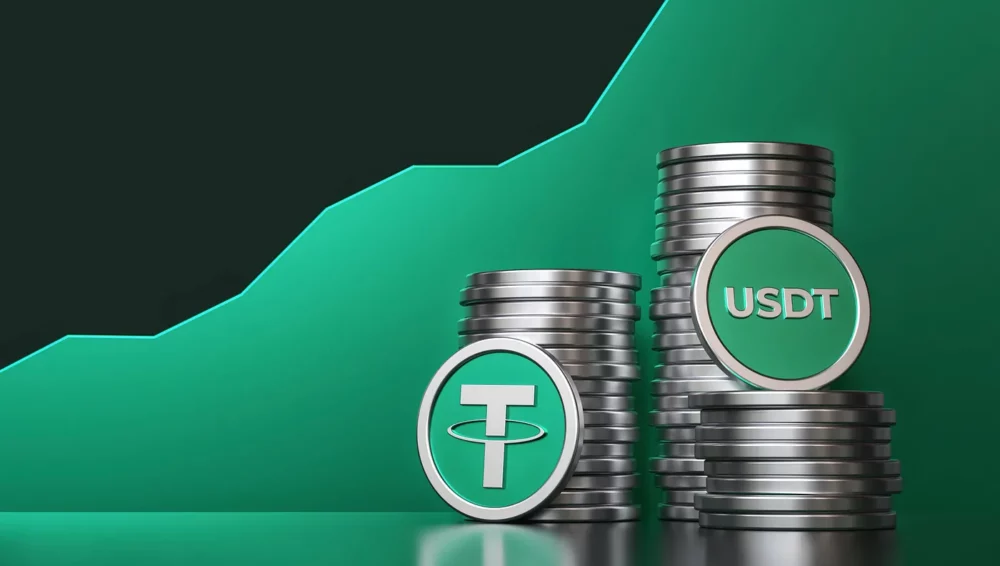Amidst the market’s recovery from the recent onslaught of SEC crackdowns, rumors swirl over the potential targeting of stablecoins in their crosshairs. Such a move could have profound implications for cryptocurrency prices, making it crucial to gauge the likelihood of this scenario and the approach regulators might adopt.
The largest stablecoins by market cap are Tether’s USDT and Circle’s USDC. Both are pegged to the US dollar and backed by various assets, typically highly liquid instruments like US Treasury bills.
In theory, when someone wants to buy stablecoins from an issuer, they give them fiat currency, such as US dollars, and the equivalent amount of stablecoins is transferred to them. Conversely, when redeeming their tokens, users return them to the issuer, receiving fiat currency.
In practice, individuals rarely interact directly with stablecoin issuers. Instead, market makers, including exchanges, maintain liquidity pools of stablecoins to facilitate users’ currency conversions. When necessary, exchanges engage in large-volume wholesale swaps with stablecoin issuers to replenish these pools or redeem stablecoins for fiat currency.

However, problems arise when the issuers grow so large they begin to attract the attention of regulators. It’s not because regulators want to stop their use but because the volume of money involved has become systemically significant to the broader financial markets. Federal Reserve Chairman Jerome Powell clarified this point during a panel discussion in Paris in 2022.
He remarked, “Many stablecoin issuers are talking about…reaching the general public more broadly, including retail payments…Should stablecoins be used in that way, much more broadly, much more public-facing, away from crypto platforms?”
Powell added, “From the standpoint of the Fed, the central bank, we think the central bank is, and will always be, the main source of trust behind money. Stablecoins essentially borrow that trust…These are private forms of money; they will be subject to runs if their reserves are not full of high-quality assets…We also think if you’re going to have private money created across the country, ideally, there needs to be a Federal role.”
From the perspective of crypto users, the idea of Federal involvement in licensing and regulating stablecoins, while helpful in the long term, could prove excessively restrictive in the short term. Banks maintain modest reserves to stay profitable in a highly regulated environment, enabling them to use some deposited funds to generate the necessary yield to cover operational costs. Stablecoin issuers wouldn’t be allowed to do this.
The crypto industry, as a whole, does not oppose regulations; instead, it seeks a regulatory framework that fosters supportive industry growth. Imposing the same rules on stablecoin issuers as those applied to private banks while the market is still in its early stages would undoubtedly stifle innovation and limit consumer choice.
For many people, the primary function of stablecoins is to mitigate the volatility risk inherent within the market. They’re essential for people to move out of volatile token holdings while keeping their funds within the crypto ecosystem.

In subsequent comments, Powell emphasized that stablecoins warrant regulation only when they expand beyond their primary focus on crypto trading and find broader adoption in real-world transactions. He said, “These are not the stablecoins that are being used on the crypto platforms. This is a world in which stablecoins are being offered more to the public.”
He explained why this is an essential distinction for regulators, “They have aspects of bank deposits; they have aspects of money market funds. Both of these are very substantially regulated. The general public will look at a form of private money like that and assume it’s money…that it has the central bank’s backing, or something like that, so they can trust it.”
This challenges the Federal Reserve and other central banks worldwide, as they are obliged to provide liquidity during crises when banks and money market funds falter. They aim to prevent stablecoins from circumventing regulations, reaping the benefits of a central bank currency while leaving the Federal Reserve responsible for bailing out failing systems. As he said, “This is our main focus now.”
In the case of stablecoin issuers, their ambitions and success have become their vulnerability. It’s evident that in crypto, we’ve become heavily dependent on USD stablecoins which overexposes the industry to any intervention by the US authorities.
It may be time for stablecoins to diversify across many more currencies to shield the market from the inevitable FUD. Or maybe it’s time to see crypto as money rather than a proxy for US dollars. As Michael Saylor often says, “1 BTC = 1 BTC”.
Join Paribus-
Website | Twitter | Telegram | Medium | Discord | YouTube
- SEO Powered Content & PR Distribution. Get Amplified Today.
- PlatoAiStream. Web3 Intelligence. Knowledge Amplified. Access Here.
- Buy and Sell Shares in PRE-IPO Companies with PREIPO®. Access Here.
- Source: Plato Data Intelligence: PlatoData
